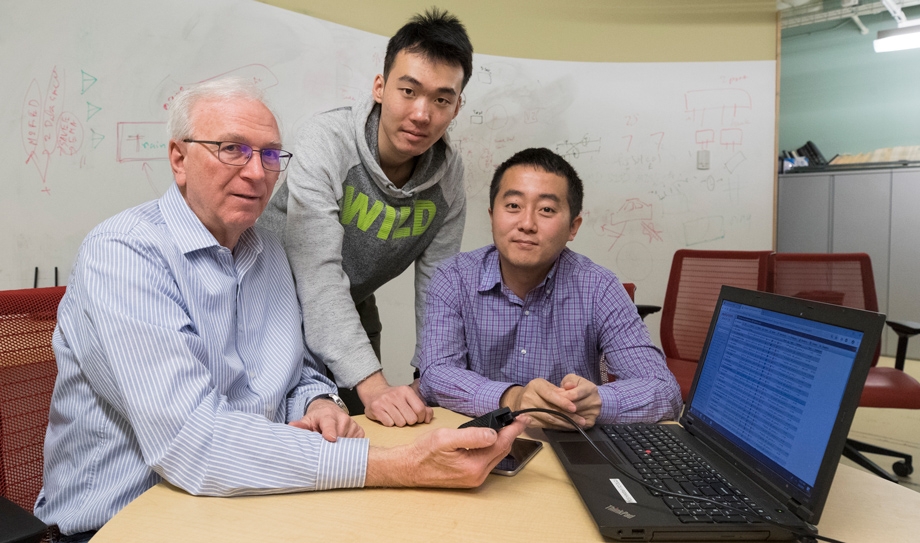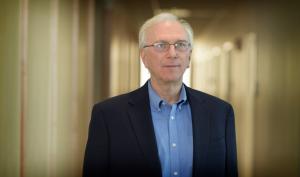“To make the system correct, you had to deal with both the logical correctness and the time correctness,” Stankovic said recently. “People before that were just looking at logical correctness and trying to get it to work in time. But it was completely fuzzy what ‘in time’ meant.”
Crucially, Stankovic argued that academia, industries and governments must coordinate “so that academic researchers will be familiar with key problems faced by system developers, and system developers will be aware of relevant new theories and technologies.”
While others shared the viewpoints Stankovic laid out, as the sole author, he came to be called by some the “father of real-time computing.”
“The paper articulated distinct challenges not faced by other branches of computer science,” said Iain Bate, professor of dependable real-time systems and deputy head of the Department of Computer Science at Britain’s University of York. “This then led to unique theories and solutions being developed.”
York, which developed one of Europe’s preeminent programs in real-time and distributed systems, presented Stankovic with an honorary doctorate in 2015.
“We often used his paper, and others by Jack, as part of research proposals,” said Alan Burns, a professor and former head of York’s computer science department. “We suspect others did as well. This allowed the real-time system community to grow.”
“By establishing real-time systems as a first-class area of research, there have been significant impact case studies and consequently improvements in the dependability of systems across a wide range of domains including automotive and avionics,” Burns said. “This has meant that systems have become more capable, and arguably safer, as otherwise the timing aspects of systems may largely have been overlooked in education, academic research and industrial practice.”
A “Smart” Revolution
Stankovic’s research continued to break ground after he arrived at UVA. Years before “smart technology” and the “internet of things” became common terms, he and his colleagues started thinking about what the future would hold for real-time systems.
They saw that embedded and real-time systems were already converging with wireless sensor networks, and in their 2005 seminal paper “Opportunities and Obligations for Physical Computing Systems,” they predicted a “technical, economic, and social revolution.”
“We envision data and services that will be available any place, any time, to all people, not just technically sophisticated organizations and individuals,” the authors wrote.
The elements for “pervasive computing” already existed. What was needed, they argued, was a focus on a domain they called “physical computing systems” based on the “seamless integration of computing with the physical world via sensors and actuators.”
Now called cyber-physical systems, or CPS, examples include internet-connected appliances, “smart” buildings and infrastructure equipped to collect and analyze data to maximize efficiency – including algorithms to help decision makers resolve priority conflicts, and wearable devices that monitor an individual’s health.
Recognizing the breadth of expertise needed for what would make up the broad field of cyber-physical systems, Stankovic and his real-time colleagues recruited researchers in control theory, signal processing, machine learning and other technologies.
Within a few years, the National Science Foundation took the unusual step of creating a dedicated funding program for cyber-physical systems, and Stankovic had an advisory role in defining the key research questions to be asked.

Stankovic, a member of the National Academy of Engineering Computer Science and Telecommunications Board, also co-chaired the academy’s Committee on 21st Century Cyber-Physical Systems Education, which produced a study and report on cyber-physical systems education in 2016.
And he contributed to another seminal paper, “Cyber-Physical Systems: The Next Computing Revolution,” and authored “Research Directions for the Internet of Things” about a class of cyber physical systems, which has been cited more than 1,300 times.
Keeping it Real
It wasn’t just Stankovic’s association with high-profile publications that earned him those technical achievement awards, each from different IEEE research communities. The most recent, the Technical Committee on Cyber-Physical Systems Technical Achievement Award, came in 2022.
The previous two were the Technical Committee on Real-Time Systems Award for Outstanding Technical Achievement and Leadership in 2000 and the inaugural Technical Community on Distributed Processing Distinguished Achievement Award in 2006.
There are entire bodies of research behind the honors. “Sometimes I do feel pride for getting this type of award from three different societies,” Stankovic said, noting that although the areas overlap, they addressed different sets of problems arising from advances in computing.
Among his significant projects was VigilNet, funded in part by DARPA, the Defense Advanced Research Projects Agency. Stankovic’s UVA team built a real-time battlefield surveillance system involving wireless sensor networks – technologies entailing both real-time and distributed systems problems that Stankovic had been part of developing, such as wireless communications, power management and security.
In the cyber-physical sphere, Stankovic has been co-leading a smart health project to help Alzheimer’s patient caregivers manage stress they’re often not aware they are experiencing in the moment. The team provides in-home kits that detect rising stress or mood changes from the caregiver’s voice. The system converts the audio to text, analyzes it and sends various types of prompts to the caregiver’s cellphone.
Both projects embody the overarching theme to his life’s work.
“How does the real world influence the software and vice versa? Algorithms are based on data, and if the data’s based on nonreal-world situations, what good is it?” Stankovic said.
For example, the caregiver’s stress-detection system might work perfectly in a quiet room, but what happens if a TV is on, a dog is barking or noise is coming from outside?
“You have to ask, how does the physical world interact with the cyber and how do you make the cyber robust enough to handle what the physical world’s really throwing at it?”
Shaping Computer Science at UVA
By the time Stankovic joined UVA’s faculty in 1997, he was an IEEE fellow and Computer Society Golden Core Member, named with the inaugural class for the institute’s 50th anniversary. He also had won the first of two IEEE meritorious service awards and was elected a fellow of the Association for Computing Machinery.
But he wasn’t recruited to UVA solely because of his research, Jones said.
“Jack also had a demonstrated talent for bringing people together, often from disparate research communities, to attack problems in computer science,” Jones said.
She cited UVA Engineering’s Link Lab, which he co-founded and directed until stepping down this year, as a recent example.
Link Lab is a center for cyber-physical research with more than 200 graduate students and about 40 faculty members from computer science and multiple engineering disciplines. It’s an intentionally non-siloed space to encourage collaboration among peers and with industry and government partners to address real-world needs.



